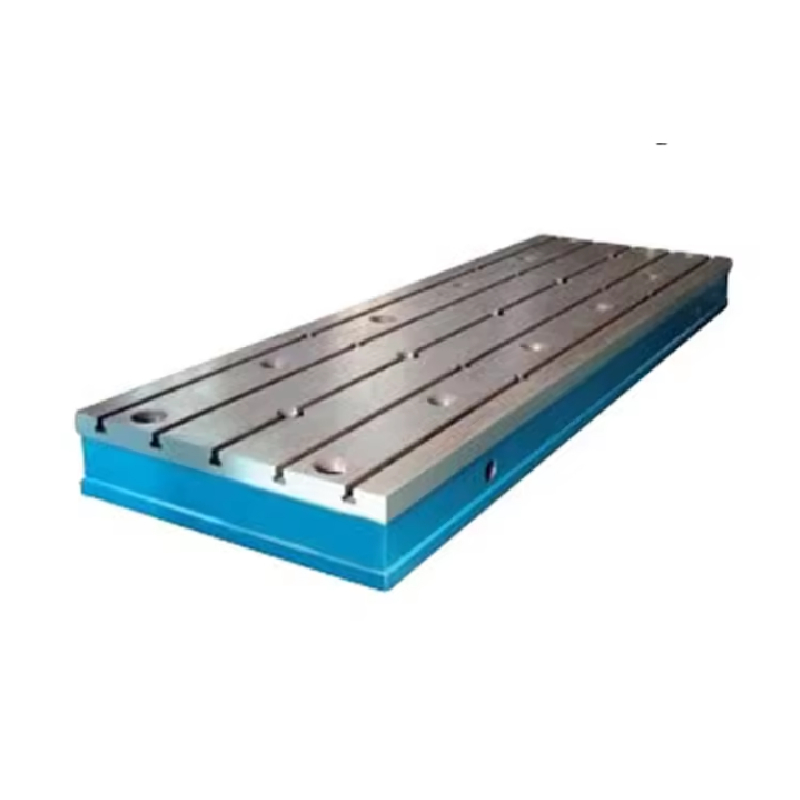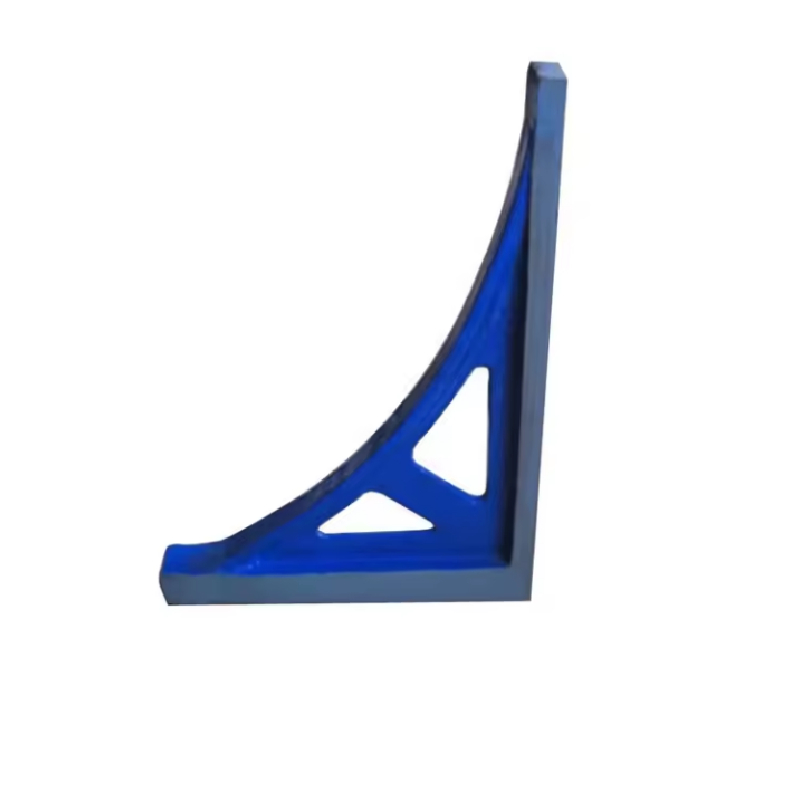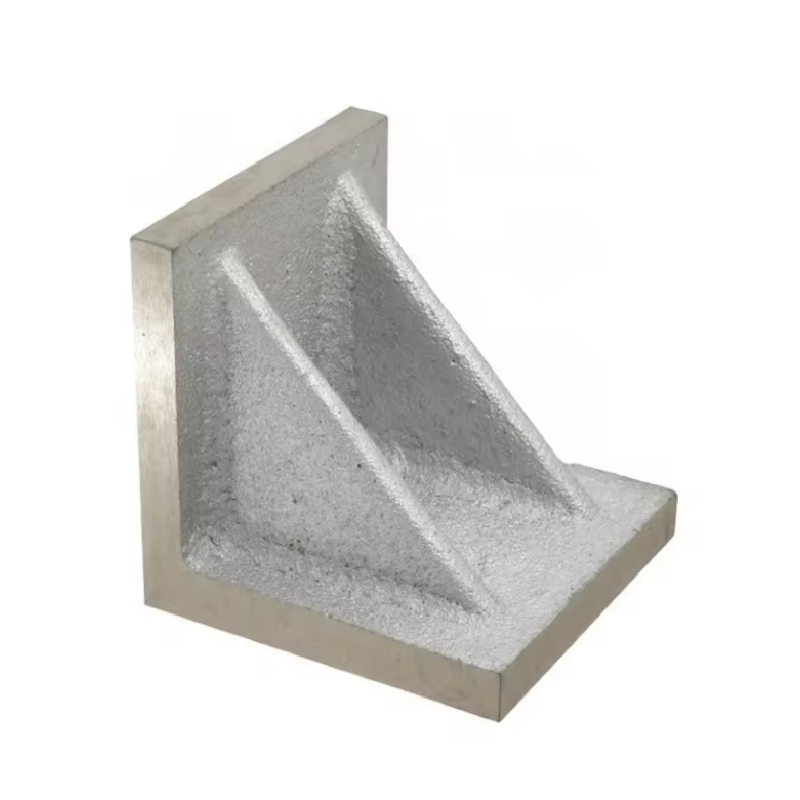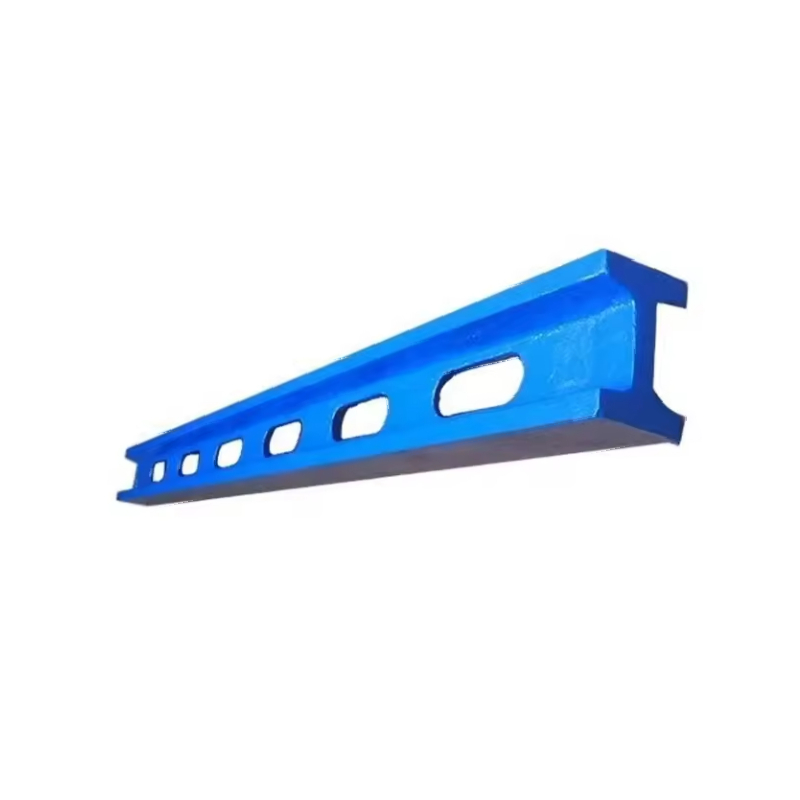Jun . 25, 2024 08:01 Back to list
Rebar Support Chairs Efficient Reinforcement for Concrete Structures
Understanding Rebar Support Chairs The Unsung Heroes of Reinforced Concrete Structures
In the intricate world of construction, every component plays a crucial role in ensuring the strength, durability, and safety of a structure. Among these components, rebar support chairs might seem like insignificant accessories, yet they are indispensable to the success of reinforced concrete projects. These small, often overlooked devices are vital for maintaining the correct positioning and spacing of reinforcement bars (rebars) during concrete pouring, ultimately contributing to the structural integrity of buildings and infrastructures.
The Role of Rebar Support Chairs
Reinforced concrete is a composite material that combines the compressive strength of concrete with the tensile strength of steel, making it suitable for a wide range of applications where load-bearing capacity is crucial. However, to harness this combined strength effectively, rebars must be precisely placed and adequately supported to ensure they remain in position as the concrete cures around them. This is where rebar support chairs come into play.
These chairs act as temporary scaffolding for rebars, elevating them off the ground or formwork to prevent direct contact with the concrete base. By doing so, they help in several ways
1. **Preventing Corrosion** Direct contact between rebars and the ground can lead to corrosion, especially in moist environments. Support chairs create an air gap that promotes better ventilation and reduces the risk of rusting.
2. **Ensuring Proper Alignment** Maintaining the correct alignment and spacing of rebars is critical for even load distribution. Support chairs facilitate this by holding each bar securely in place before and during concrete pouring.
3. **Enhancing Structural Stability** By keeping rebars at the designed elevation within the concrete slab, support chairs contribute to the overall stability and strength of the structure, preventing potential weaknesses such as sagging or bending under load **Enhancing Structural Stability** By keeping rebars at the designed elevation within the concrete slab, support chairs contribute to the overall stability and strength of the structure, preventing potential weaknesses such as sagging or bending under load **Enhancing Structural Stability** By keeping rebars at the designed elevation within the concrete slab, support chairs contribute to the overall stability and strength of the structure, preventing potential weaknesses such as sagging or bending under load **Enhancing Structural Stability** By keeping rebars at the designed elevation within the concrete slab, support chairs contribute to the overall stability and strength of the structure, preventing potential weaknesses such as sagging or bending under load
**Enhancing Structural Stability** By keeping rebars at the designed elevation within the concrete slab, support chairs contribute to the overall stability and strength of the structure, preventing potential weaknesses such as sagging or bending under load **Enhancing Structural Stability** By keeping rebars at the designed elevation within the concrete slab, support chairs contribute to the overall stability and strength of the structure, preventing potential weaknesses such as sagging or bending under load rebar support chair.
Types and Materials
Rebar support chairs are available in various designs and materials to suit different project requirements. Common types include
- **Plastic Chairs** Lightweight and cost-effective, plastic chairs are widely used in residential and light commercial construction. They are easy to install and can be molded to accommodate different rebar sizes.
- **Metal Chairs** Typically made from steel or stainless steel, metal chairs offer greater load-bearing capacity and durability, making them suitable for heavy-duty applications such as bridges and high-rise buildings.
- **Adjustable Chairs** For more complex structures requiring precise rebar placement, adjustable chairs provide flexibility in height and can be tailored to exact specifications on site.
Installation and Considerations
Proper installation of rebar support chairs is essential to realizing their benefits fully. Key considerations include
- **Correct Placement** Chairs should be evenly spaced and positioned according to engineering plans to ensure uniform support throughout the slab.
- ** Compatibility with Rebar Size** Choosing the right chair size that matches the diameter of the rebar being used is crucial to prevent slippage or inadequate support.
- **Load Requirements** Considering the weight of the concrete and any additional loads the structure will bear, selecting chairs with appropriate load-bearing capacities is vital.
Conclusion
Rebar support chairs, though small in stature, play a monumental role in reinforcing concrete structures. Their function goes beyond mere physical support; they are integral to enhancing the longevity, stability, and overall quality of constructions. By understanding their importance and implementing them correctly, constructors can significantly contribute to building safer, stronger, and more durable structures for generations to come. In the realm of reinforced concrete, these unsung heroes quietly stand as pillars of support, ensuring that our built environment stands tall and resilient against the tests of time.
rebar support chair.
Types and Materials
Rebar support chairs are available in various designs and materials to suit different project requirements. Common types include
- **Plastic Chairs** Lightweight and cost-effective, plastic chairs are widely used in residential and light commercial construction. They are easy to install and can be molded to accommodate different rebar sizes.
- **Metal Chairs** Typically made from steel or stainless steel, metal chairs offer greater load-bearing capacity and durability, making them suitable for heavy-duty applications such as bridges and high-rise buildings.
- **Adjustable Chairs** For more complex structures requiring precise rebar placement, adjustable chairs provide flexibility in height and can be tailored to exact specifications on site.
Installation and Considerations
Proper installation of rebar support chairs is essential to realizing their benefits fully. Key considerations include
- **Correct Placement** Chairs should be evenly spaced and positioned according to engineering plans to ensure uniform support throughout the slab.
- ** Compatibility with Rebar Size** Choosing the right chair size that matches the diameter of the rebar being used is crucial to prevent slippage or inadequate support.
- **Load Requirements** Considering the weight of the concrete and any additional loads the structure will bear, selecting chairs with appropriate load-bearing capacities is vital.
Conclusion
Rebar support chairs, though small in stature, play a monumental role in reinforcing concrete structures. Their function goes beyond mere physical support; they are integral to enhancing the longevity, stability, and overall quality of constructions. By understanding their importance and implementing them correctly, constructors can significantly contribute to building safer, stronger, and more durable structures for generations to come. In the realm of reinforced concrete, these unsung heroes quietly stand as pillars of support, ensuring that our built environment stands tall and resilient against the tests of time.
 **Enhancing Structural Stability** By keeping rebars at the designed elevation within the concrete slab, support chairs contribute to the overall stability and strength of the structure, preventing potential weaknesses such as sagging or bending under load **Enhancing Structural Stability** By keeping rebars at the designed elevation within the concrete slab, support chairs contribute to the overall stability and strength of the structure, preventing potential weaknesses such as sagging or bending under load
**Enhancing Structural Stability** By keeping rebars at the designed elevation within the concrete slab, support chairs contribute to the overall stability and strength of the structure, preventing potential weaknesses such as sagging or bending under load **Enhancing Structural Stability** By keeping rebars at the designed elevation within the concrete slab, support chairs contribute to the overall stability and strength of the structure, preventing potential weaknesses such as sagging or bending under load rebar support chair.
Types and Materials
Rebar support chairs are available in various designs and materials to suit different project requirements. Common types include
- **Plastic Chairs** Lightweight and cost-effective, plastic chairs are widely used in residential and light commercial construction. They are easy to install and can be molded to accommodate different rebar sizes.
- **Metal Chairs** Typically made from steel or stainless steel, metal chairs offer greater load-bearing capacity and durability, making them suitable for heavy-duty applications such as bridges and high-rise buildings.
- **Adjustable Chairs** For more complex structures requiring precise rebar placement, adjustable chairs provide flexibility in height and can be tailored to exact specifications on site.
Installation and Considerations
Proper installation of rebar support chairs is essential to realizing their benefits fully. Key considerations include
- **Correct Placement** Chairs should be evenly spaced and positioned according to engineering plans to ensure uniform support throughout the slab.
- ** Compatibility with Rebar Size** Choosing the right chair size that matches the diameter of the rebar being used is crucial to prevent slippage or inadequate support.
- **Load Requirements** Considering the weight of the concrete and any additional loads the structure will bear, selecting chairs with appropriate load-bearing capacities is vital.
Conclusion
Rebar support chairs, though small in stature, play a monumental role in reinforcing concrete structures. Their function goes beyond mere physical support; they are integral to enhancing the longevity, stability, and overall quality of constructions. By understanding their importance and implementing them correctly, constructors can significantly contribute to building safer, stronger, and more durable structures for generations to come. In the realm of reinforced concrete, these unsung heroes quietly stand as pillars of support, ensuring that our built environment stands tall and resilient against the tests of time.
rebar support chair.
Types and Materials
Rebar support chairs are available in various designs and materials to suit different project requirements. Common types include
- **Plastic Chairs** Lightweight and cost-effective, plastic chairs are widely used in residential and light commercial construction. They are easy to install and can be molded to accommodate different rebar sizes.
- **Metal Chairs** Typically made from steel or stainless steel, metal chairs offer greater load-bearing capacity and durability, making them suitable for heavy-duty applications such as bridges and high-rise buildings.
- **Adjustable Chairs** For more complex structures requiring precise rebar placement, adjustable chairs provide flexibility in height and can be tailored to exact specifications on site.
Installation and Considerations
Proper installation of rebar support chairs is essential to realizing their benefits fully. Key considerations include
- **Correct Placement** Chairs should be evenly spaced and positioned according to engineering plans to ensure uniform support throughout the slab.
- ** Compatibility with Rebar Size** Choosing the right chair size that matches the diameter of the rebar being used is crucial to prevent slippage or inadequate support.
- **Load Requirements** Considering the weight of the concrete and any additional loads the structure will bear, selecting chairs with appropriate load-bearing capacities is vital.
Conclusion
Rebar support chairs, though small in stature, play a monumental role in reinforcing concrete structures. Their function goes beyond mere physical support; they are integral to enhancing the longevity, stability, and overall quality of constructions. By understanding their importance and implementing them correctly, constructors can significantly contribute to building safer, stronger, and more durable structures for generations to come. In the realm of reinforced concrete, these unsung heroes quietly stand as pillars of support, ensuring that our built environment stands tall and resilient against the tests of time.
Latest news
-
Ball Valve Body Types — Durable, Customizable, In StockNewsNov.05,2025
-
Spline Gauge Precision | Custom Design & ISO CertifiedNewsNov.04,2025
-
Ball Valve Body Types: Durable, Corrosion-Resistant BuildNewsNov.03,2025
-
Knife Edge Ruler | Precision Straightedge for InspectionNewsNov.03,2025
-
Inspection Ruler – Precision Measuring, Durable & CertifiedNewsNov.03,2025
-
Types of Micrometer: Pro-Grade Sets, Thread & StandardsNewsNov.03,2025
Related PRODUCTS
